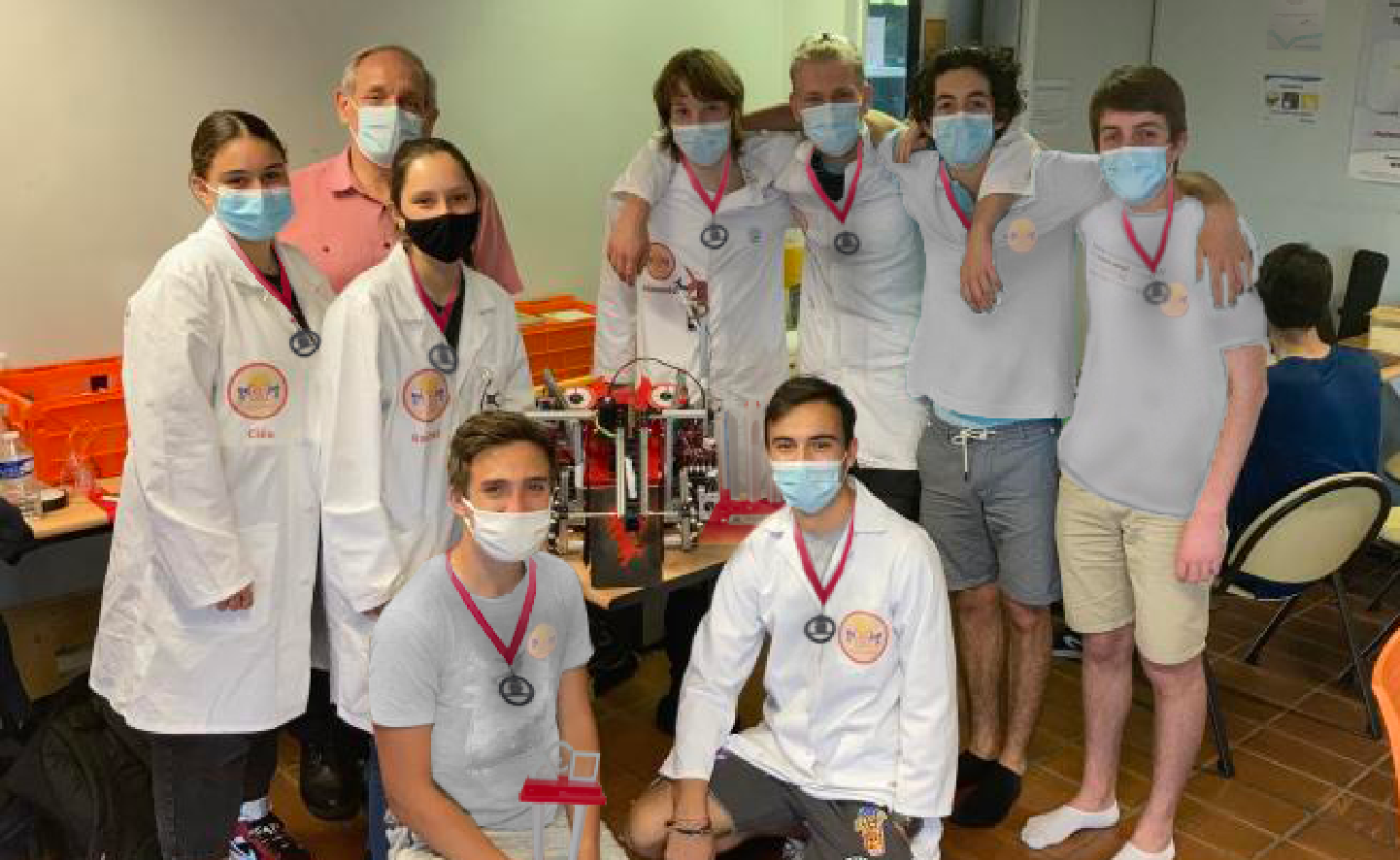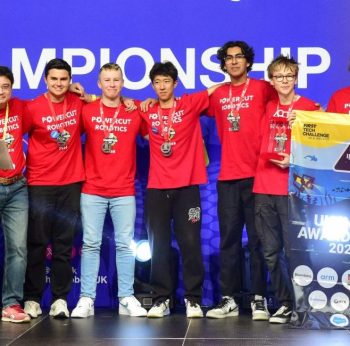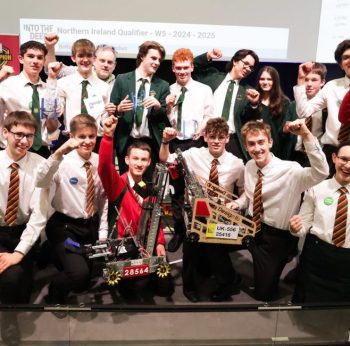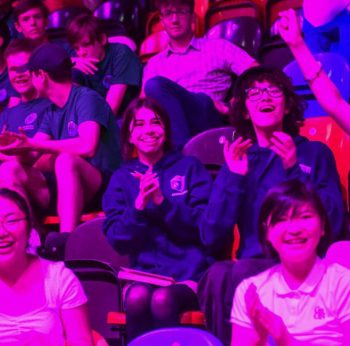
Think Award Winner — Team F.R.I.T.E.S.
About the team
We have a very close-knit, motivated and involved team, with different but complementary profiles in programming, construction, design and communication. A good atmosphere and commitment resulted in a powerful synergy that pushed us to surpass ourselves, to dream big, and which finally led us to this success. In fact, it is by combining our strengths and differences, by promoting a plurality of ideas, concepts and designs that we succeeded in designing a robot that is as aesthetic as effective.
How the team worked together
This year brought quite a few challenges. Because of the pandemic, for a large part of the year we were only allowed to meet with 6 people in total (2 per team), if at all. However, we managed to work out ways to meet virtually to design the robot and prepare our work for when we could meet.
However, we were not able to organise events at our school or elsewhere for most of the year, even though this was one of our main goals for the year. We did manage to organise an event on the last day of school, as restrictions had eased a little. For a large part of the team, this was the best part of the year for robotics, as we were able to share our passion with the younger students, letting them drive our robots and showing our work during the year.
Significant challenges
We faced many different challenges this year, from construction to programming and even just being able to meet. As an example, one of our goals was to be able to throw as many rings as possible into the high goal, which meant that we needed a very accurate launcher. This challenge was interesting because it required the help of many different areas of expertise : the construction team needed to come up with a design, the programmers needed to precisely manage the speed of the motors, and the electrical team needed to manage the power distribution to be able to run the motors at a high speed. After testing many different prototypes, we found that using one flywheel on each side worked best. Building the system was also a challenge, which we solved with inventive materials such as a lego chain for moving the rings, 3d printed gears, and a lot of sellotape. Overcoming this obstacle showed us the value of teamwork, and how we should listen to everyone’s ideas and try each one of them. Every member of the team worked together on this component, and in the end we have a robot that can throw rings into the high goal 95% of the time.
About winning the Inspire Award
We are both very proud and grateful. Proud to have received this award, as a consecration of our work throughout the year, proud to represent the international high school of Valbonne and to see once again a French team on the podium. And then we are also very grateful, and would like to thank those who have made this adventure possible, starting with our mentor Mr. Lecoutre who accompanied, guided and inspired us, who made himself available and passionate during these last few complicated months. We would also like to thank the Lycée International de Valbonne, its head teacher Mr. Eric Petit, and our principal education advisor Mrs. Claire Bernard for their support and for providing the club’s rooms. Finally, thanks to all the members of our team and to the FIRST UK team for persevering and organising the competition.
Next steps for the team
We’re hoping that next year, the covid situation will be better. However, we still have big plans. We’re hoping to recruit even more team members, and we’re already organising events in the school. Our sponsor Arm is also working to open robotics clubs in another school near us, and we’re hoping to help those teams get set up. Our main goal (besides winning the competition, that is), is to help as many people as possible discover robotics and STEM, in our school, our department, and maybe even the whole of France.



